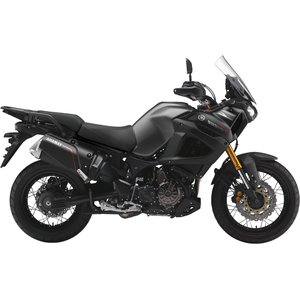Yamaha XTZ 1200 Super Tenere [2010-2012]: A Testament to Adventure Touring Mastery
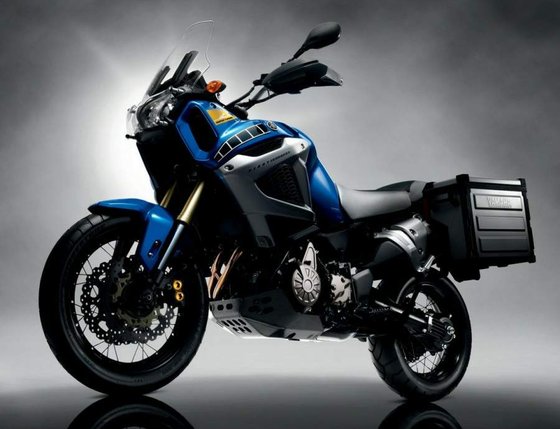
Introduction
The Yamaha XTZ 1200 Super Tenere, produced between 2010 and 2012, isn’t just a motorcycle—it’s a declaration of intent. Built to honor Yamaha’s Dakar Rally legacy, this generation of the Super Tenere bridges the gap between rugged off-road capability and refined long-distance touring. After spending days testing this machine across asphalt, gravel, and everything in between, it’s clear that Yamaha aimed to create a bike that thrives where the pavement ends, without sacrificing on-road poise. Let’s dive into what makes this adventure tourer a compelling choice for riders who refuse to be confined by maps.
Engine Performance: Torque Meets Intelligence
At the heart of the Super Tenere lies a 1,199cc parallel-twin engine with a 270-degree crankshaft—a design choice that borrows from Yamaha’s R1 superbike lineage. This setup delivers a distinctive exhaust note, somewhere between a V-twin’s growl and a traditional parallel-twin’s purr. With 110 HP at 7,250 RPM and 114 Nm (84 lb-ft) of torque at 6,000 RPM, the engine prioritizes mid-range grunt over top-end frenzy.
Twist the throttle, and the YCC-T (Yamaha Chip-Controlled Throttle) translates inputs into seamless power delivery. The D-Mode system offers two personalities:
- Sport (S) Mode: Crisp, immediate response for spirited riding.
- Touring (T) Mode: A subdued throttle map for slippery conditions or fatigue-free highway slogs.
The real star, though, is the 3-mode traction control. TCS1 reins in wheelspin aggressively, TCS2 allows playful slides on loose surfaces, and turning it off unlocks raw, unfiltered control for experts. Paired with a buttery-smooth shaft drive, the Super Tenere’s powertrain feels bulletproof, whether you’re crawling through mud or overtaking on a mountain pass.
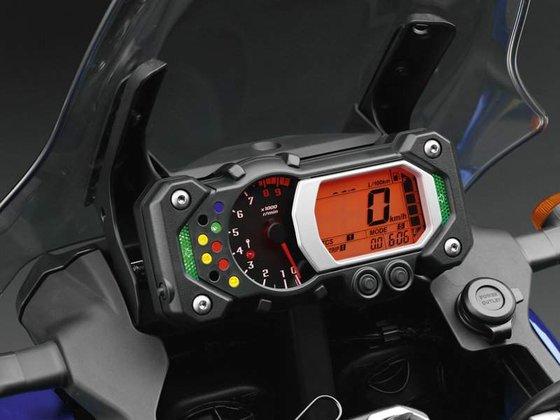
Handling and Comfort: Taming the Weight
At 260 kg (575 lbs) wet, the Super Tenere isn’t a featherweight. Yet, Yamaha’s engineers worked magic by centralizing mass. The steel backbone frame and low-slung engine create a surprisingly nimble ride. The 43mm adjustable USD forks and monoshock rear (preload and rebound damping) absorb bumps with composure, though aggressive off-roaders might crave more travel than the 190 mm (7.5 in) offered.
Standing up on the pegs reveals thoughtful ergonomics: the rubber-damped footpegs grip boots securely, and the handlebar position strikes a balance between control and comfort. The adjustable seat (845–870 mm / 33.2–34.2 in) accommodates most riders, though shorter inseams will tip-toe at stops.
Wind protection is a mixed bag. The manually adjustable screen lacks reach, causing buffeting for taller riders—a common complaint. Aftermarket tall screens (available at MOTOPARTS.store) are a worthy upgrade for cross-continent trips.
Technology Features: Ahead of Its Time
In an era when traction control was still a novelty, the Super Tenere packed cutting-edge tech:
- Unified Braking System (UBS): Pull the front lever, and the system proportionally applies rear braking force. Stomp the rear pedal alone for traditional control.
- Non-Defeatable ABS: A double-edged sword. While it inspires confidence on pavement, purists lament its intrusion in deep off-road scenarios.
- Twin-Spark Ignition: Ensures efficient combustion, even at altitude.
The analog-digital dash feels dated by modern standards, but its simplicity is a virtue. No touchscreens to distract—just essential data displayed clearly.
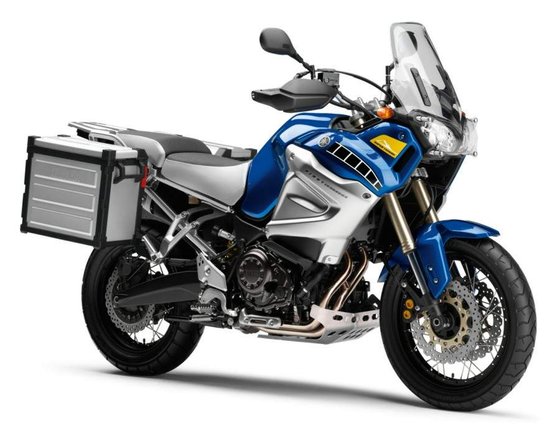
Off-Road Capability: More Than a Poseur
Don’t let the weight fool you. The Super Tenere’s 19-inch front wheel and 17-inch rear (both spoked, tubeless) bite into gravel with authority. The 205 mm (8.1 in) ground clearance shrugs off rocks, and standard engine guards add peace of mind.
Traction control in TCS2 mode is a game-changer for loose terrain. It permits enough slip to pivot through corners without letting things get hairy. Still, the non-defeatable ABS can frustrate in sand or mud, where locking the rear brake is sometimes necessary. For casual dirt explorers, though, it’s more than capable.
Touring Considerations: Eat Miles, Not Gas
With a 23-liter (5.1 US gal) tank and 6.1 L/100 km (38.6 MPG) fuel efficiency, the Super Tenere boasts a 380 km (236 mi) range—ideal for remote routes. The plush seat and relaxed riding position cater to all-day comfort, though the vibration at highway speeds (noticeable above 5,000 RPM) warrants grip upgrades or bar weights.
Integrated pannier mounts and a 12V socket underscore its touring intent. Yamaha’s optional aluminum cases (included in the First Edition package) blend durability with sleek aesthetics.
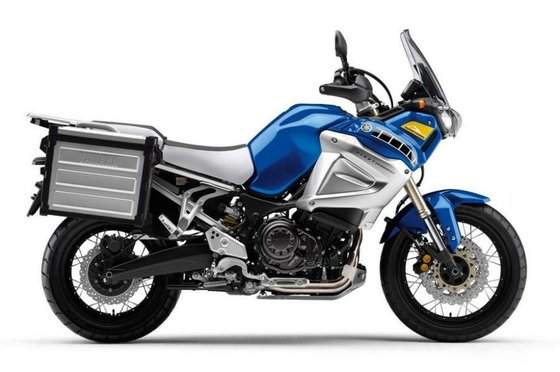
Competition: How Does It Stack Up?
The Super Tenere entered a battlefield dominated by:
1. BMW R1200GS: Lighter (203 kg / 448 lbs dry), more off-road-focused, but pricier.
2. Ducati Multistrada 1200: A sportier, tech-loaded alternative with 150 HP but limited off-road chops.
3. KTM 990 Adventure: Raw, aggressive, and lighter (209 kg / 461 lbs dry), but lacking shaft drive convenience.
4. Suzuki V-Strom 1000: Budget-friendly but requiring mods for serious adventure.
Yamaha’s Edge:
- Shaft drive reliability vs. chain-driven rivals.
- Superior fuel range.
- A smoother, more refined engine character.
Weaknesses:
- Heaviest in class, noticeable in technical terrain.
- Non-defeatable ABS limits hardcore off-road flexibility.
For riders valuing durability over outright agility, the Super Tenere holds its own as a globe-trotting workhorse.
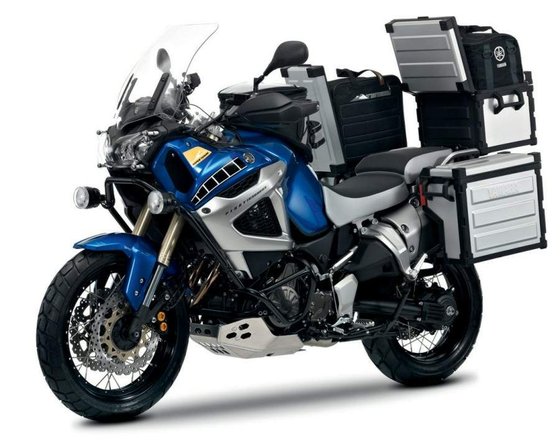
Maintenance: Keeping the Adventure Alive
The Super Tenere’s shaft drive eliminates chain adjustments, but prioritize these:
1. Oil Changes: Every 6,000 km (3,700 mi) with semi-synthetic 10W-40.
2. Valve Checks: Every 42,000 km (26,000 mi)—a forgiving interval for long-haulers.
3. Suspension Tuning: Rebuild forks/seals every 30,000 km (18,600 mi) or after heavy off-road use.
4. Shaft Drive Lubrication: Replace gear oil (80W-90 GL-5) every 20,000 km (12,400 mi).
Recommended Upgrades from MOTOPARTS.store:
- High-Flow Air Filters: Boost throttle response in dusty conditions.
- Aftermarket Skid Plates: Reinforce protection for rocky trails.
- Heated Grips: Essential for alpine passes.
- LED Auxiliary Lights: Illuminate unmarked trails.
Final Thoughts
The 2010–2012 Yamaha XTZ 1200 Super Tenere isn’t perfect, but it’s authentic. It rewards riders who value mechanical simplicity fused with just enough tech to enhance—not overshadow—the journey. Whether you’re threading through Patagonian gravel or carving Alpine switchbacks, this bike remains a steadfast companion. At MOTOPARTS.store, we’re here to equip your Super Tenere for whatever lies beyond the horizon.
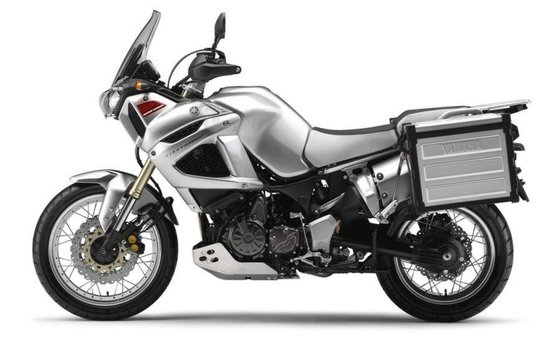












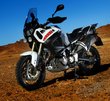





Specifications sheet
| Engine | |
|---|---|
| Stroke: | Four-stroke |
| Max power: | 81 kW | 109.0 hp |
| Max torque: | 114 Nm |
| Fuel system: | Fuel Injection (YCC-T) |
| Lubrication: | Dry sump |
| Max power @: | 7250 rpm |
| Displacement: | 1199 ccm |
| Max torque @: | 6000 rpm |
| Configuration: | Inline |
| Cooling system: | Liquid cooled |
| Compression ratio: | 11.0:1 |
| Number of cylinders: | 2 |
| Valves per cylinder: | 4 |
| Dimensions | |
|---|---|
| Wheelbase: | 1540 mm (60.6 in) |
| Wet weight: | 260 |
| Seat height: | 845–870 mm (33.2–34.2 in) |
| Overall width: | 980 mm (38.6 in) |
| Overall height: | 1410 mm (55.5 in) |
| Overall length: | 2255 mm (88.8 in) |
| Ground clearance: | 205 mm (8.1 in) |
| Fuel tank capacity: | 23 L (5.1 US gal) |
| Drivetrain | |
|---|---|
| Clutch: | Wet, multiple-disc diaphragm spring |
| Final drive: | shaft |
| Transmission: | 6-speed, shaft drive |
| Maintainance | |
|---|---|
| Rear tire: | 150/70 -17 |
| Engine oil: | 10W40 |
| Front tire: | 110/80 -19 |
| Break fluid: | DOT 4 |
| Spark plugs: | NGK CPR8EB-9 |
| Spark plug gap: | 0.9 |
| Final drive oil: | 200 ml 80W-90 GL-5 |
| Coolant capacity: | 2.1 |
| Forks oil capacity: | 0.97 |
| Engine oil capacity: | 4.2 |
| Engine oil change interval: | Every 5000 km or 2 years |
| Valve clearance (intake, cold): | 0.10–0.16 mm |
| Valve clearance check interval: | 24,000 km / 15,000 mi |
| Valve clearance (exhaust, cold): | 0.22–0.28 mm |
| Recommended tire pressure (rear): | 2.5 bar (36 psi) solo, 2.8 bar (41 psi) with passenger |
| Recommended tire pressure (front): | 2.25 bar (33 psi) |
| Additional Features | |
|---|---|
| Shaft drive: | True |
| Riding modes: | Yamaha D-MODE (Sport, Touring) |
| Standard ABS: | True |
| Traction control: | 3 modes (TCS1, TCS2, OFF) |
| Adjustable windshield: | True |
| Adjustable seat height: | True |
| Chassis and Suspension | |
|---|---|
| Frame: | Steel tube backbone |
| Rear brakes: | Single 282 mm disc, ABS |
| Front brakes: | 2 x 310 mm discs, ABS/Unified Brake System |
| Rear suspension: | Monoshock, adjustable preload and rebound damping |
| Front suspension: | Upside-down telescopic fork, 43 mm, adjustable preload, compression, and rebound damping |
| Rear wheel travel: | 190 mm (7.5 in) |
| Front wheel travel: | 190 mm (7.5 in) |



